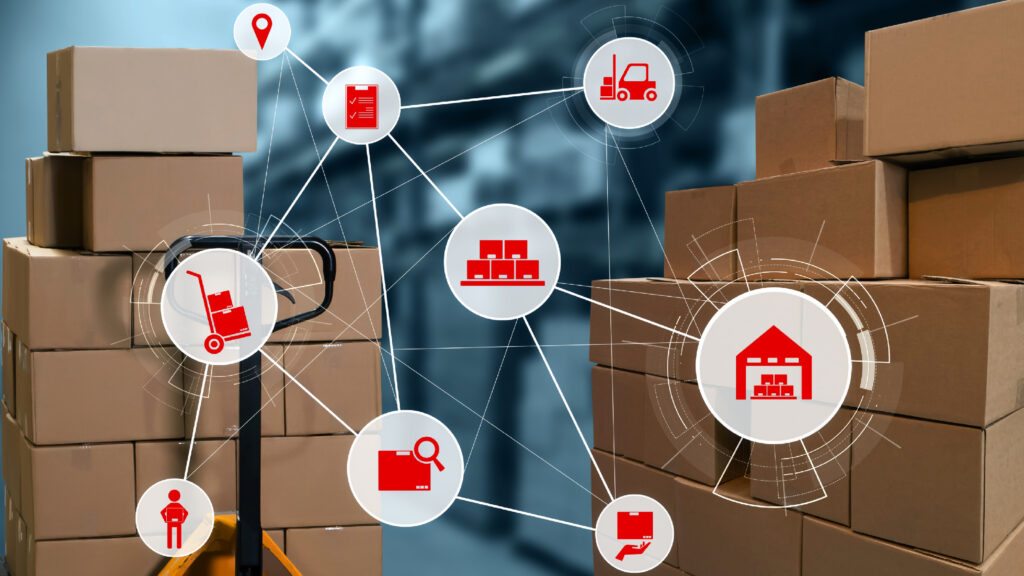In 2023, the supply chain sector is all set to undergo some significant changes as a result of technological advancements, changing customer behavior, and new business models. Automation and artificial intelligence will be used more frequently, which will greatly improve operations and simplify supply chain management (SCM). As businesses work to reduce their carbon impact and make sure that their supply chains are socially responsible, sustainability and ethical behavior will also be in the spotlight.
The advent of blockchain technology in the supply chain will boost the sector’s efficiency, security, and transparency. As a result of how these supply chain trends are influencing SCM, businesses will need to put an emphasis on agility and resilience if they want to stay ahead of the curve and succeed in a continuously evolving landscape.
The supply chain market has been expanding consistently despite the COVID-19 pandemic, and it is predicted to continue to grow significantly. With a CAGR of 11.2%, the global supply chain market is likely to grow from 2020 to 2027. Globalization and technology both play a significant role in this.
Now that we have a firm grasp on the concept of supply chain management, let us delve deeper into the crux of the matter – how will the supply chain change in the future?
Top 6 Game-Changing Supply Chain Trends in 2023
Much like living things, supply chains also need to change in order to survive. Weak linkages are replaced by new technologies like robotic process automation (RPA), cloud computing, and artificial intelligence (AI), which also affect the supply chain software business as a whole.
The following are some of the major supply chain trends we expect to see in 2023:
1. Integration of Artificial Intelligence and Automation
One of the key supply chain trends that organizations should watch out for in 2023 is the use of AI and automation in supply chain practices. The primary reasons for this are:
- Optimization of Operations: By streamlining procedures, lowering errors, and boosting productivity, AI and automation can assist businesses in operating more efficiently.
- Improved Decision-Making: AI is capable of immediately analyzing massive amounts of data and offering insights that can improve supply chain decision-making.
- Increased Productivity: By decreasing the time and effort needed for manual processes, automation can help businesses enhance productivity by freeing up resources for more strategic tasks.
- Cost Savings: By lowering labor and operating costs, automation can help businesses save costs and boost their bottom line.
- Customer Satisfaction: By giving customers access to more precise and timely information, speeding up delivery, and verifying product and service quality, AI and automation can assist businesses in increasing customer satisfaction.
According to Supply Chain Digital, the industry will increasingly use automation and data lineage to address the labor gap and create a reliable supply chain.
2. Prioritizing Sustainability
In 2023, sustainability will be a major supply chain trend as businesses strive to lower their carbon footprints and satisfy customers’ increasing demand for products that are environmentally friendly. Companies are investing in sustainable sourcing, cutting waste, and implementing green technologies to improve their supply chain practices in response to stricter rules and consumer pressure.

The need to preserve natural resources and lessen the environmental impact of company operations is another factor driving the move toward sustainability. Businesses understand that emphasizing sustainability is good for the environment, may boost brand reputation, boost competitiveness, and result in long-term cost savings.
As per the survey conducted by Gartner,
“Almost 84% of leaders operating in the supply chain industry plan to invest a significant amount of money in climate adaptation along with mitigation measures in the next 18 months.”
3. Phenomenal Growth of E-commerce
E-commerce expansion will be a prominent supply chain trend in 2023 as online buying spreads across the globe. Supply chain operations have been significantly impacted by the emergence of this digital supply chain trend, which has forced businesses to modify and enhance their delivery procedures in order to satisfy online customers’ needs.
One of the major factors that are driving digital supply chain trends includes rising internet usage, improvements in mobile technology, and the demand for convenient, efficient, and reliable delivery choices. Companies are investing in new technologies, such as automation and AI, to optimize their supply chain processes and guarantee effective product delivery to customers in order to keep up with the growing demand. The retail sector is being transformed by this change in e-commerce, which is also altering how goods are produced, delivered, and sold.
4. Expansion of Industry 4.0 and IoT
In 2023, the growth of Industry 4.0 and IoT will be a significant supply chain trend as businesses look to use technology to streamline their processes. Businesses may boost productivity, reduce waste, and enhance the flow of goods throughout their supply chain by integrating connected devices, advanced analytics, and automation.
The trend is promoting industrial innovation and change. To maintain their competitiveness in a market that is changing quickly, companies are seeking to take advantage of the opportunities presented by Industry 4.0 and IoT.
5. Emergence of Blockchain
As businesses look to improve transparency, security, and efficiency in their operations, the emergence of blockchain is a major supply chain trend in 2023. Blockchain technology makes it possible to keep a safe and impenetrable record of transactions and data, which makes it perfect for monitoring the flow of commodities across supply chain practices.
The technology can help decrease the possibility of fraud, promote stakeholder participation, and make the supply chain more visible. Blockchain is becoming increasingly popular as a solution to supply chain problems like growing globalization, complicated logistics, and changing customer needs.
As per an article by Deloitte,
“Promising opportunities for improvement are being presented by new technologies throughout the supply chain. Blockchain technology has the potential to increase supply chain traceability and transparency while also lowering administrative costs.”
6. Focus on Agility and Resilience
The impact of COVID-19 on global supply networks has made a focus on agility and resilience in the supply chain a trend for 2023. As a result of the pandemic, businesses prioritized agile and resilient supply chain strategies to ensure business continuity. The outbreak underlined the necessity for flexibility and quick response to disruptions. This entails expanding supplier diversity, deploying technology, and creating backup plans.
These developments are anticipated to have a substantial impact on the supply chain sector in 2023 and beyond, spurring innovation, productivity, and customer satisfaction.

The Transformational Outlook of Supply Chain Trends 2023
The supply chain future will be shaped by a range of complex and interconnected factors, from technological advancements to changing consumer demands and global economic shifts. By embracing these supply chain trends and investing in the necessary tools and resources, businesses can create more efficient, transparent, and customer-centric supply chains that can adapt quickly to changing market conditions and drive long-term growth and success.



